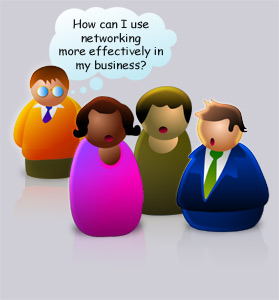 Is your business struggling? Have you been thinking of closing down shop or moving locations? Maybe you don’t have enough customers coming in or leaving great reviews for you?
Is your business struggling? Have you been thinking of closing down shop or moving locations? Maybe you don’t have enough customers coming in or leaving great reviews for you?
Well, here is something you may want to consider instead of closing down the business for good. I mean, you’ve been working hard and in the end, you deserve a successful running business. So, why not give it one last shot. One last push before you give up for good.
There are several ways to enhance your customers experience. Yes, some might cost you some money (I see it more as an investment) and some are free. You can also use a good combination of both (which I would recommend) and find a better way to market your business.
1. Look at your customer service
Is your business a local shop or restaurant? Do you have an office where you meet customers regularly? Do you provide an outstanding service?
In many cases we find that the business owners believe they offer a great customer service only to be told afterwards that their service isn’t really that good at all. Providing a great service is one of the most important aspects of business. If you believe customers chose you because of your low pricing, think again. It’s only a minority who look for the cheapest option. Over 85% of customers are buying based on their feelings and emotions that they have towards a seller. No matter what you sell, if you are not looking after your customers properly, then you will not survive. Change your routine if you have to, but make sure you always offer top notch service to your customers.
2. Sales ability of owners and staff
Are you capable of selling? Maybe you think you are but how good are you really? Many retailers or waiters/ waitresses are just order takers. Customer comes in, buys a product and leaves. Nobody is asking questions, trying to establish the customers needs. I’ve been preaching this for years now and except a few people who took this on board many are still suffering the low sales turnover. If you ask the right questions and LISTEN, your customers will feel valued and will buy from you. Not necessarily the product they were initially looking for, but maybe something in addition to that, or more. In rare cases customers have to be shown that the product they chose is not the right product for them. This happens every now and then but it is up to you to make the right recommendation to your customer. What is the right product? Can they get it from you? If not, where can they get it? Sales and customer service in this case go hand in hand. And even if you lose the sale because you don’t have product xyz in stock, you can still help some other person to get the deal by sending them over. You will earn credibility from your customer and they will still be back. You can also consider getting the product for your customer. Have you ever considered that? Think in terms of joint venture. Imagine a customer comes in and buys a TV from you and he also wants a very specific DVD player that you don’t stock. Maybe you know somebody who stocks this DVD player and you give them a call and tell them, I have a customer for you who wants to buy this product. Do you have it in stock? Imagine the other person says, yes, I sell it for 199. Could you make me a deal so I can sell it on to my customer for 199? And say this person only gives you a discount of 10 EUR. Suddenly you can sell a product from somebody else and get a small referral fee or commission out of this one. Put your business head on for once and think who can help your business achieve higher sales results? How can you work together? Maybe you can do the same for this other business if they refer clients over to you? Think about it for a moment.
3. Change strategy
Sometimes we have to change our strategy, our routes to market or even our entire business around in order to make it work. Remember why you went into business in the first place? Maybe it was because you thought you could do the same as your boss did. You can offer a better more proficient service or sell more products? Be more flexible with customers? How did that work out for you? Well, if you’re still reading, I presume not so good. Business is about constant change. Moving away from one strategy that you’ve held for a number of years is sometimes necessary. Don’t get stuck in “The old ways” but rather look at what you can do differently in order to succeed.
4. Use some crazy ideas
Crazy doesn’t necessarily mean bad or “insane”. Crazy sometimes is good for business. Be a bit more open to attract different customers to your premises. Be a bit more outgoing, flexible and open minded. Sometimes you have to do the drastic thing and just get out of your shop and talk to people on the street. It may not be the most comfortable way of doing business but heck it beats closing down shop, doesn’t it? Imagine you can talk to 50 people a day when you get out of your shop. And only 5 of them would visit afterwards, do you think it would be worth your while if they come in and start buying from you?
Maybe you can do a competition, work with other businesses together, create an in-house event etc. Maybe you can do a shopping hour and offer everything for one hour a day half price (maybe on selected items etc.). It would be a promotion so consider that you may need to invest in this but getting people into the store should be first priority.
How about a nice “Midnight Shopping Event” with a glass of wine or champagne (booking mandatory). Maybe you own a boutique and you could do a modeling event? Become a model for one night…The ideas and possibilities are endless.
5. Restructuring and new layout
Sometimes it’s the business itself that needs a new structure and layout. Even if you have a great marketing and sales strategy, it doesn’t mean that customers will come in flying into your premises. And maybe an event is not even a problem but bookings are not made? Look at your shop and what you would like to achieve. How is it structured? Does it look nice from the inside and outside? Is the layout great? Do you have old carpets or new ones? Maybe you want to attract a younger audience but your products and services don’t reflect that. Take a risk and create a new layout, new store front, buy some exciting new products etc. It might help you turn things around once word gets out.
6. Get a coach or consultant/ mentor
This might be a good investment. A business coach or consultant can help you turn things around. Yes, they are usually not that cheap but the value you’re getting will help you and your business not only to stay alive but to grow. Of course no coach or mentor can come in and save the day. You should not expect that. If you’re already bankrupt or very close to closing, it might not even be possible for them to help you at all. However a coach is always a great way to discover alternative options. Maybe closing the business is good but the way to do it might be worth looking into. Maybe they can help you discover new avenues to go down to and create better business opportunities with you. A business coach can cost anything from 50 – 200€ an hour and is depending on their own experience and expertise. The value of this is incredible if you are a open minded and ready to explore. A great coach or consultant can help you on any of the points raised above. You just need to have an open mind and be ready for change.
7. Don’t give up
No matter what you do, don’t give up on your dreams. Just because one thing isn’t working doesn’t mean something else won’t work. Sometimes we have to close down one chapter of our lives (or business lives) to open up a new one. There is always opportunities out there so keep following them. Learn from your mistakes and make sure that next time around you avoid making the same mistakes. You will get better at this but as with everything it requires practice and patience.
Let me tell you a quick story. Have you ever heard of the Phoenix? The Phoenix is a mythology creature, a bird that has a long life. Towards the end of it’s life-span it gets heavily sick and dies by self-combustion. Out of the ashes rises now a new, healthy bird, majestic and full of life. The Phoenix is believed to regenerate itself every 100 years or so, (at least that’s how the story goes that I’ve heard). I think it’s the perfect story for any struggling business. If you are struggling or really have no other option as to closing down shop, think of the Phoenix. No matter if you had a great run or you were struggling right from the beginning, something majestic will come out of this struggle. Something so incredible that you can’t even imagine it right now.
But I am certain that you will rise again and again out of your own ashes if you keep going and trying.
Thank you for reading.
Follow us on Facebook and Twitter for more up to date information.
Carsten
Carsten Schnier is the founder of SalesClinic & Coach Clinic and professional sales consultant based in Cork, Ireland. Creating a synergy between consultation, training and coaching helps our clients to achieve the best results.








